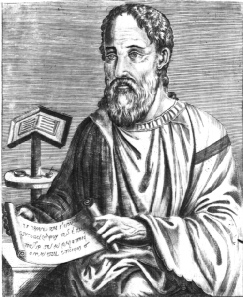



The Parish Church of St George the Martyr, Waterlooville

Autumn 2015
The Eusebian Canons
In that masterpiece of Calligraphy and Illumination called The Lindisfarne Gospels there are folios devoted to lists which are within decorated arches. The arches themselves are works of art in their own right, being beautifully adorned with delightful patterns. These folios are known as Canonical Tables, and are also present in many manuscripts of the epoch such as the Book of Kells, Book of Durrow, amongst others. They intrigue the viewer as being a variety from the usual illumination -
These Canonical Tables were an attempt to ‘harmonise the Gospels’, being cross-
Eusebius lived cAD269 to c340. He was regarded in his time as the Father of Ecclesiastical History. He wrote widely and became Bishop of Caesarea in c313, also becoming advisor to the Emperor Constantine.
The Bishop attended the Council of Nicaea, from whence we derive the Nicaean Creed. He was a moderate supporter, before this time, of Arius (whose views on the divinity of Christ have been discussed in a previous article). However at the Council he rejected the heresy. Similarly he never fully supported the text of the Athanasian Creed. Eusebius is the principal source of the events in the first and second centuries of Christianity. A powerful Christian figure.
Rod Dawson
